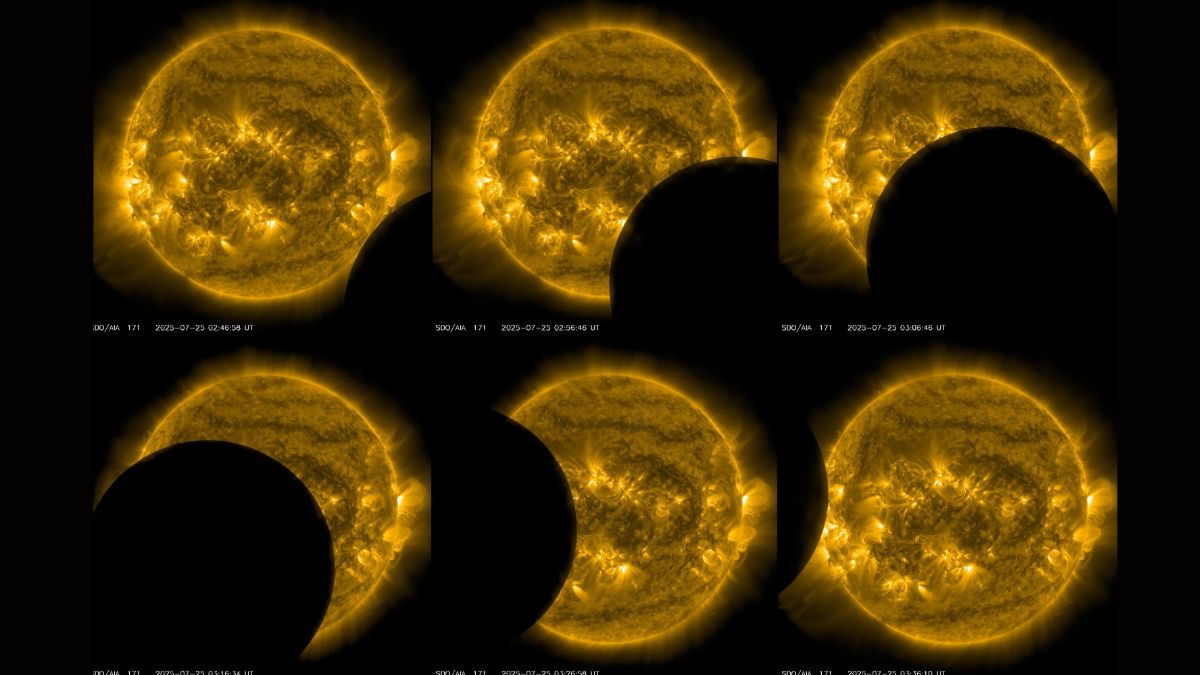
NASA’s Photo voltaic Dynamics Observatory (SDO) has witnessed and recorded an unprecedented phenomenon of two photo voltaic eclipses in sooner or later on July 25, 2025. These two eclipses came about solely hours aside that day, and have been photographed by SDO devices pointed up and away from the Solar in geosynchronous orbit. First, round 2:45 UTC, the Moon handed between SDO and the Solar. Then, beginning at about 6:30 UTC, Earth itself eclipsed the Solar from SDO’s perspective, with the Solar disappearing behind our planet shortly earlier than 8:00 UTC. Since launching in 2010, SDO has repeatedly monitored the Solar’s exercise, from photo voltaic flares to magnetic fields, serving to forecasters predict house climate.
Moon Transit
According to NASA, SDO orbits Earth in a excessive geosynchronous orbit, so it has an nearly fixed view of the Solar. On July 25, this vantage level captured a partial solar eclipse because the Moon handed between the spacecraft and the Solar. NASA’s mission staff had predicted this “lunar transit” would cowl about 62% of the photo voltaic disk. Certainly, the Moon’s silhouette moved slowly throughout the Solar (round 2:45–3:35 UTC), blocking roughly two-thirds of the brilliant disk at most. The observatory’s ultraviolet telescope (AIA) recorded the occasion, revealing the Solar’s decrease ambiance and coronal loops across the sharply outlined lunar edge. This transit was the deepest lunar eclipse SDO noticed in 2025.
Earth’s Eclipse from Area
Hours later, on the identical day, Earth itself handed between SDO and the Solar. Starting round 6:30 UTC on July 25, our planet totally blocked the observatory’s view of the photo voltaic disk. This occurred throughout SDO’s common eclipse season (a roughly three-week interval twice annually when Earth’s orbit crosses the satellite tv for pc’s line of sight). The entire eclipse lasted till shortly earlier than 8:00 UTC. In SDO’s photographs, Earth’s shadow has a fuzzy edge as a result of our ambiance scatters daylight, in distinction to the Moon’s crisp eclipse.
